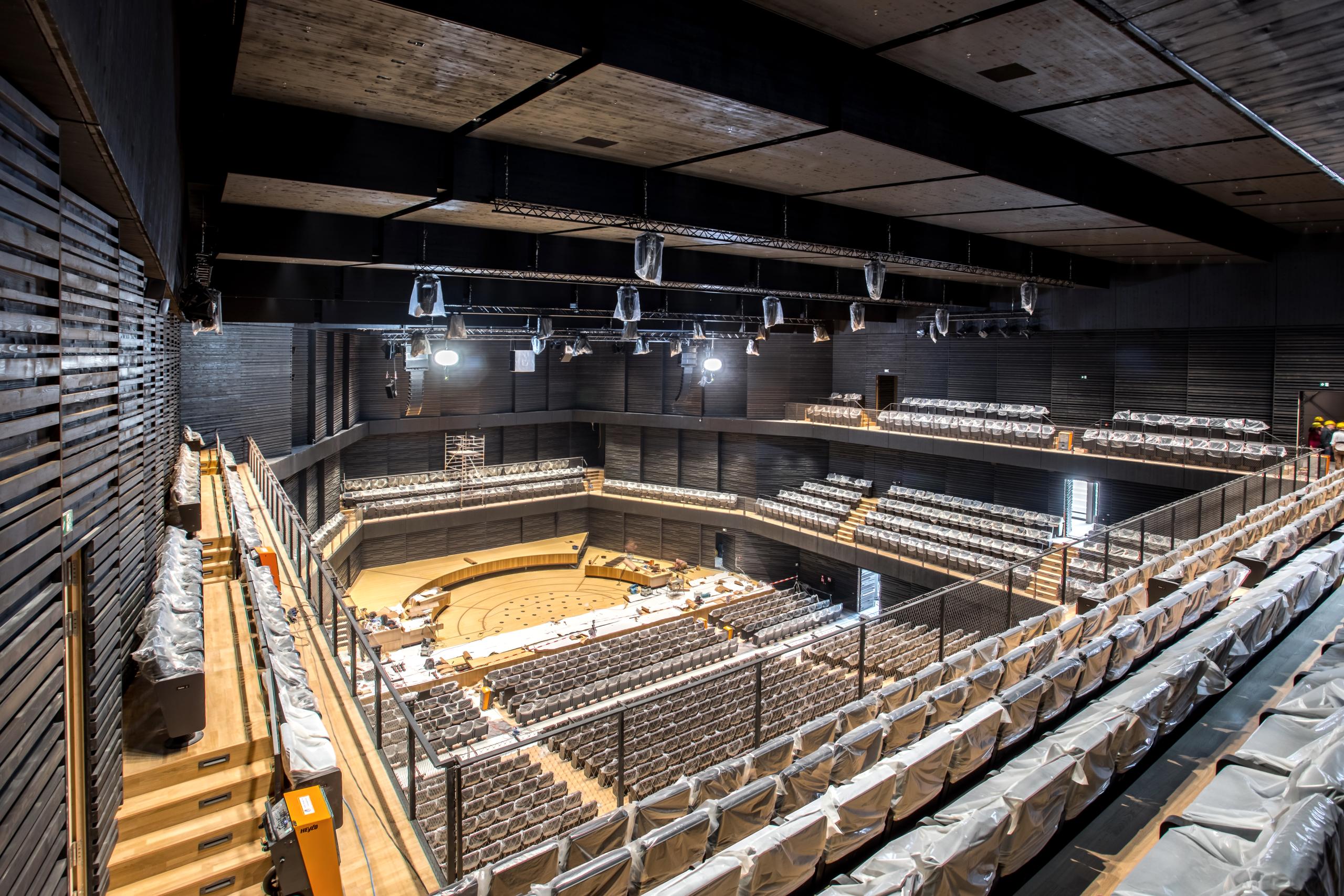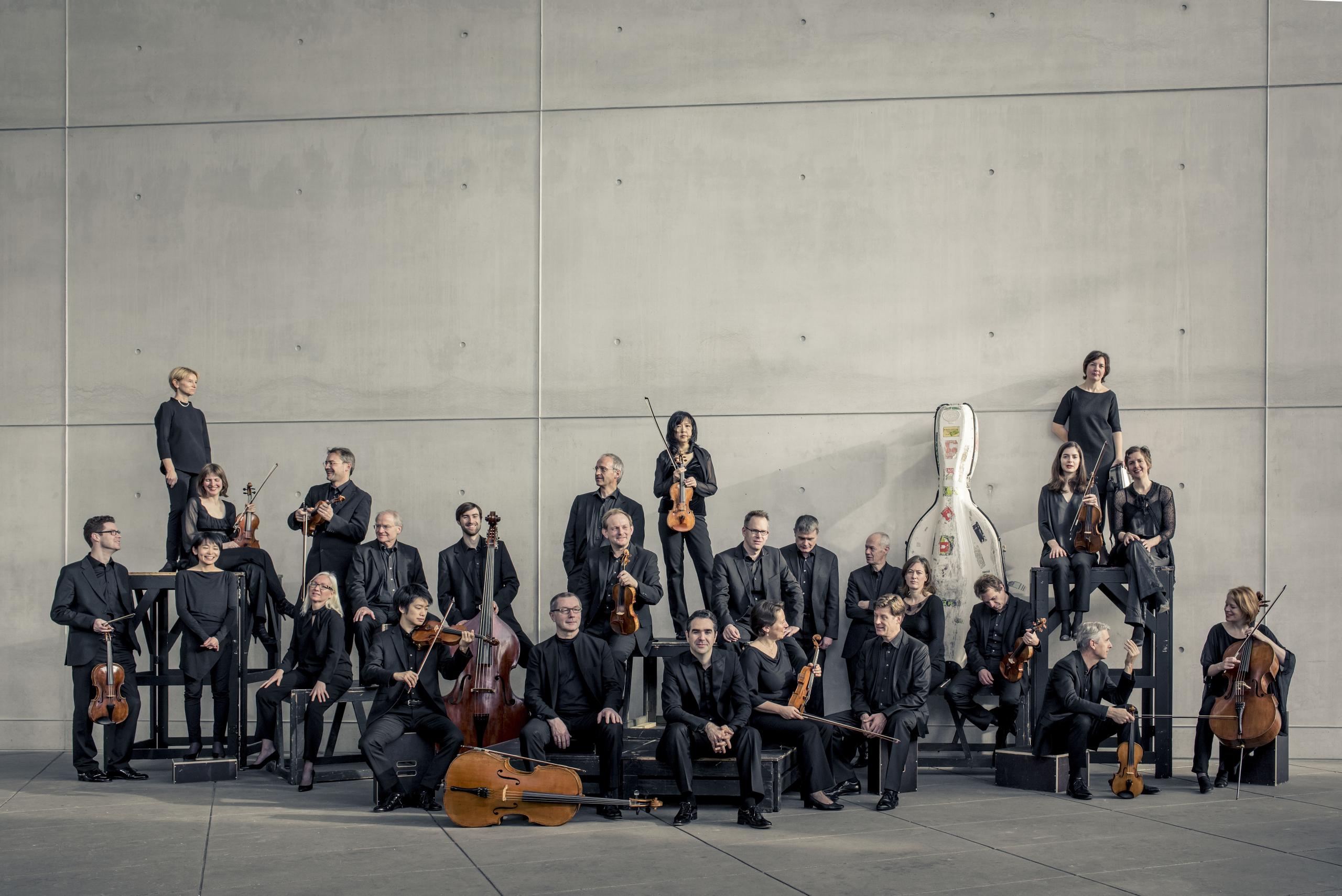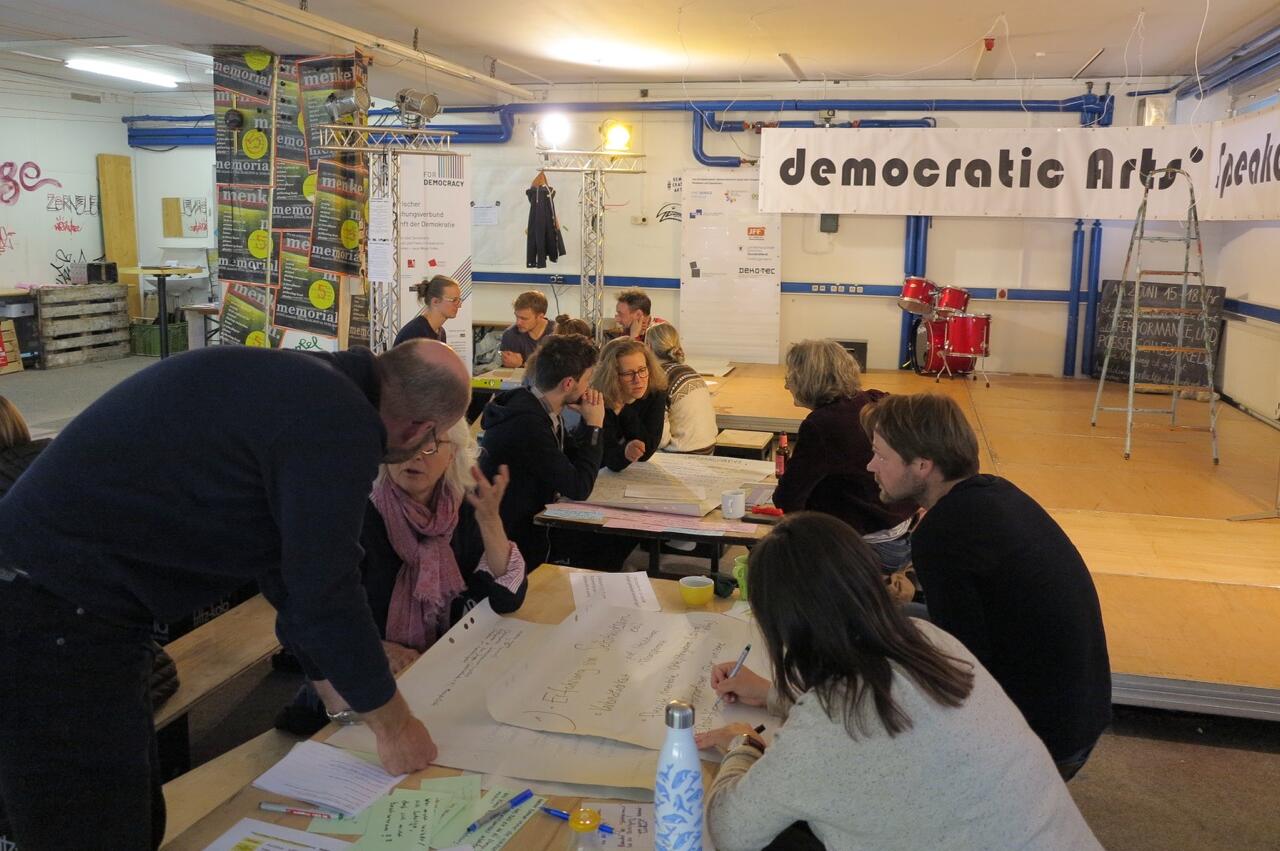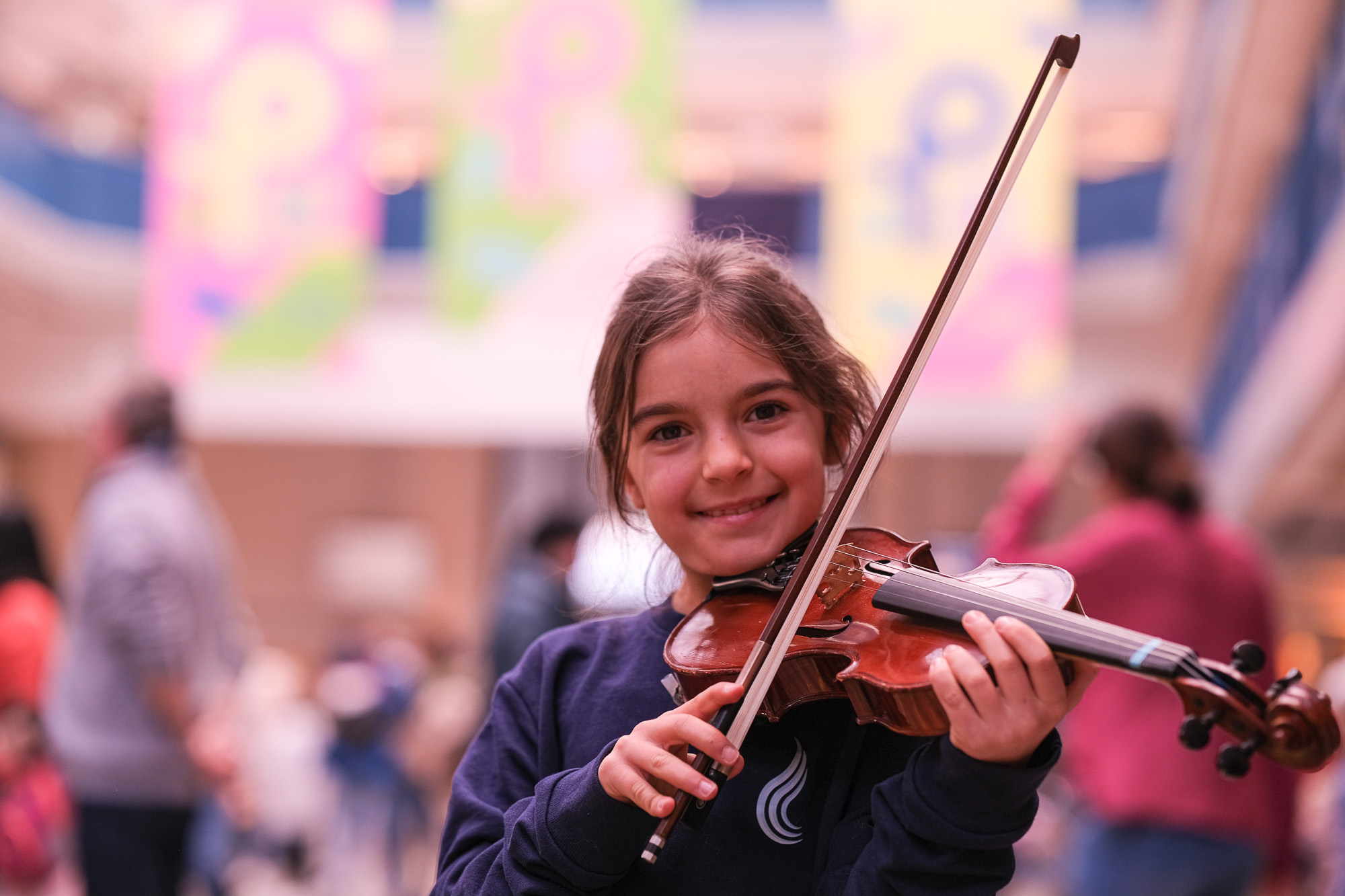March 2021: The crane swoops with circumscribed elegance, like a conductor wielding their baton. Metallic hammer blows set the rhythm, a drill begins an impromptu solo, the diesel engines add a bass note, a saw shrieks: there’s already plenty to hear as the Isarphilharmonie takes shape at Gasteig HP8. But the cacophony will soon take on a much more sophisticated note, as the sound in the auditorium is being designed by the world-renowned Nagata Acoustics consultancy, headed up by Yasuhisa Toyota.
If the first audience is to take its seats in the new Isarphilharmonie in October 2021, then plenty of decisions need to be made beforehand to help optimise its acoustics. The dimensions of the space, the layout of the tiers, the position of the stage – all these factors set the tone for the concert experience and are carefully balanced from an acoustic perspective. Even the coverings for the seats, which are surely more likely to be assessed for their comfort, have been evaluated in detail in terms of their sound characteristics. And the acoustics team is not only interested in the 1800 people who will take their seats as music lovers, but also in terms of their individual sound absorption properties.
People’s demands on live music have increased, not least because of the superior quality of recordings. But the audience at a live concert also want to hear how the space shapes the sound. In the past, people assumed that acoustic clarity went hand in hand with reduced reverberation. Recent experience has shown, however, that both can be maximised to a certain degree.
“The goal is to balance extreme clarity with a rich, full tone.”

To achieve the excellent acoustics of the Isarphilharmonie, Nagata Acoustics worked hand in hand with architects gmp – Gerkan, Marg and Partners, who designed the plans for the build. General contractor NÜSSLI is enlarging the concert hall with a room volume of almost 60,000 m³. This will include an 1800-seat concert hall made of prefabricated solid wood elements fitted into the shell. What is unique about the project is that it was designed from the start as a temporary structure on a restricted budget. The construction method was chosen to allow quick erection and, if necessary, easy dismantling.
That has also influenced the architectural style, which features flat, straight lines instead of curved shapes. From an acoustic perspective, the shape of the space as well as the position and orientation of the reflective surfaces are crucial factors, hence the importance of the collaboration with the architects. The first step is to use the dimensions of the stage to determine the appropriate geometry – even the ceiling has to be a specific height. The results produce an interplay between the layout for the seats and the orientation of the acoustic surfaces.
Debates about concert halls often set the rectangular shoebox style against the arena-style Weinberg construction method. Star acoustician Yasuhisa Toyota believes these decisions are overrated and his consultancy takes a flexible approach, focusing on working with the architects to identify the best way to meet the requirements of each individual concert hall. Even though the footprint of the interim Philharmonic Hall is rectangular, the final layout does not feel confrontational. Bevelled surfaces and choir seats behind the stage in conjunction with sideways raised seating create an intimate atmosphere and a strong connection between musicians and audience. Faceted side walls and ceiling elements meet the dual challenges of creating large, flat surfaces while avoiding the detrimental effects of parallel planes. To ensure that each seat enjoys a balanced sound experience, the materials must reflect the sound in both high and low frequencies. Finally, the large mass of the auditorium means that the sound energy is retained within the space.


Early on in the planning stages for a project, Toyota works almost exclusively with a virtual model, but the materials used also have to undergo tests. The shape of the seats, the type of foam and the seat covers – everything is 100% custom designed. This meant constructing as many as twenty test seats and measuring their sound characteristics in a special chamber; an expense that definitely paid off for the 1800 seats. But for all the expertise that has been dedicated to the process so far, Toyota’s team is clear on one thing:
“The music is created on the stage and our job is simply to convey it. Our goal is to make sure that the audience hears what happens on stage as authentically as possible.”
The conductor and musicians are responsible for creating the sound vision, so freedom of expression and the flexibility to adapt to a range of instrumental line-ups and genres is the top priority. “We want to reproduce the full range of the sound as clearly as possible. That can also be a challenge for orchestras, as they are very much exposed on stage, with little to hide behind.”
This meant that the involvement of the Munich Philharmonic at every stage of the design was crucial. The opportunity to develop an auditorium in collaboration with its resident ensemble is hugely valuable for Toyota. It allows the orchestra to take ownership of the space even before it is finished – but that isn’t the final stage in the process. The period before the official opening of the auditorium, when the ensemble is familiarising itself with the space before taking to the stage in front of the eyes and ears of the audience is essential. “When you show off your new home to the world, you naturally want to present it in the best light.” No problem for an outstanding orchestra like the Munich Philharmonic.
As far as the acoustic designers at Nagata are concerned, this means that the most exciting moment takes place long before the grand opening. “When the first notes ring out during the first rehearsal, that’s when we actually find out what the space sounds like.” Despite all the technology, science and planning, there is no foolproof recipe for designing a space so that people can enjoy music in it. Each concert experience is unique. The audience experiences and hears each performance differently, even if the same orchestra is playing. That’s why, according to Quiquerez, we should always be wary of judging after just one impression. “The sense of mystery never goes away and even though we work with and for music, it still has to have a touch of magic at the end of the day.”
“I am so happy! Look at me, I still haven’t stopped smiling. My goal was to ensure that everyone in this auditorium was part of the action – both the orchestra and the audience. I’ve succeeded in doing that, including through the shape of the space and the layout of the galleries. If the audience can see properly, then they’ll hear properly as well. ”


“We feel like we’re on an island of bliss. We tried out various orchestral layouts during rehearsals and all I can say is: “it’s a complete success.”
Nagata Acoustics
Nagata Acoustics was founded in 1971 by Dr. Minoru Nagata in Tokyo and quickly built an outstanding reputation in the field of acoustics for music and performing arts. Spearheaded by its star acoustician Yasuhisa Toyota, the company has designed auditoriums for world-famous concert halls, including the Suntory Hall in Tokyo (1986), the Walt Disney Music Hall in Los Angeles (2003) and Hamburg’s Elbphilharmonie. In the process, it has collaborated with distinguished architects including Frank Gehry, Arata Isozaki, Renzo Piano and Herzog & de Meuron. Very few companies have more extensive experience when it comes to acoustics, given that Toyota has already optimised the sound in 50 concert halls and 300 auditoriums. Toyota’s company also has a first-class reputation with world-class conductors including Daniel Barenboim, Zubin Mehta and Sir Simon Rattle. In addition to the Isarphilharmonie, Nagata Acoustics is also handling the acoustics for the upcoming Gasteig renovation and developing new designs for the Philharmonic Hall, the Carl Orff Hall and the Small Concert Hall.



Text: Benedikt Feiten




